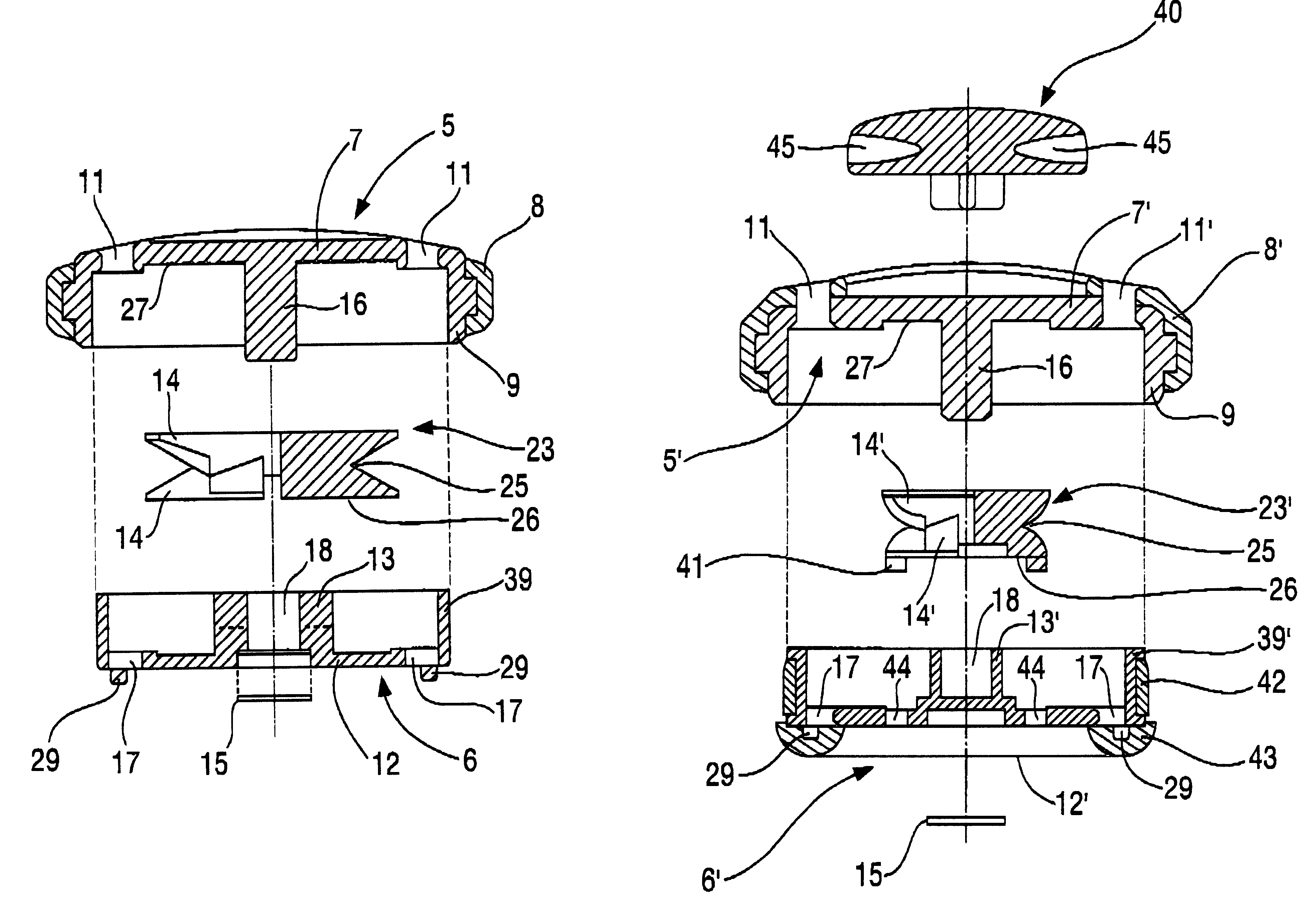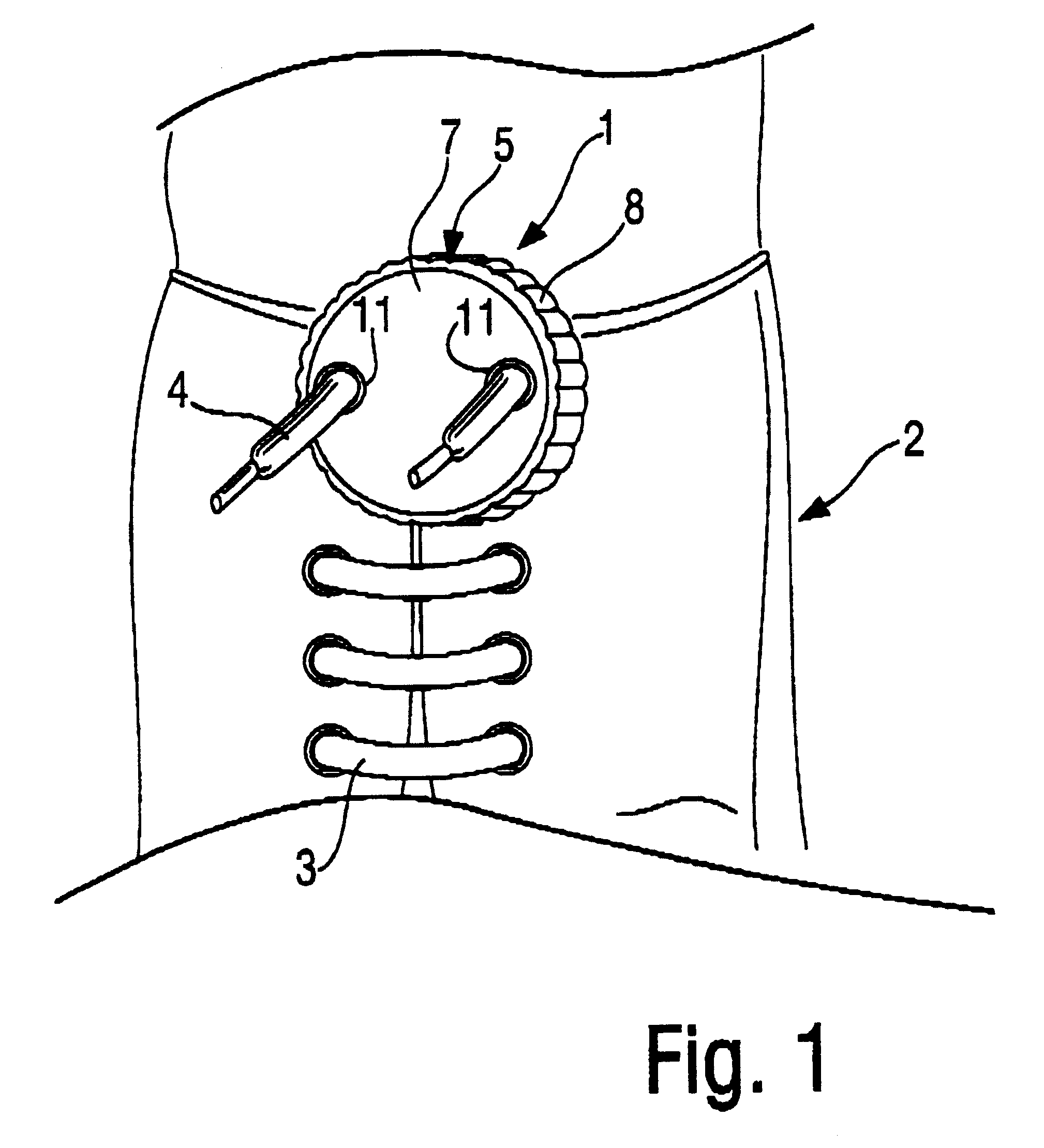Device for immobilizing the ends shoe laces
a technology for shoe laces and ends, which is applied in the direction of shoe lace fastenings, eyelets, clothing, etc., can solve the problems of increasing production costs, known devices, and early wear of devices
- Summary
- Abstract
- Description
- Claims
- Application Information
AI Technical Summary
Benefits of technology
Problems solved by technology
Method used
Image
Examples
first embodiment
FIG. 2 shows a section of the device 1 according to the invention, comprising the cap element 5, the base element 6, and hub element 23. The base element 6 comprises a first flat structure 12 with a peg 13 projecting from the first flat structure and at least two openings 17 in the first flat structure spaced from the hub (FIGS. 2, 3a, and 3b). The cap element 5 comprises a second flat structure 7 and at least two spaced apart openings 11 (FIGS. 1, 2, 4a and 4b) which are arranged in the second flat structure 7 such that by at least one position of the cap element 5 relative to the base element 6 two openings in the first flat structure of the base element are aligned with two openings 11 in the second flat structure 7 of the cap element 6. The hub element 23 it axially symmetrical and non-rotatably connected to the peg 13 of the base element and the cap element is rotatable connected with base element 6 by means of the securing ring 15, wherein the second flat structure of the cap ...
second embodiment
FIG. 7 shows a section of the device 1 according to the invention, comprising the cap element 5', the base element 6' and the hub element 23'. The base element 6'comprises a first flat structure 12' with a peg 13' projecting from the first flat structure and, at least two openings 17 spaced from the hub in the first flat structure. The cap element 5' comprises a second flat structure 7' and two spaced apart openings 11 which are provided is the second flat structure 7 such that at least in one position of the cap element 5' relative to the base element 6' two openings in the first flat structure of the base element are aligned with two openings 11 in the second flat structure 7' of the cap element 6'. The hub element 23' in axially symmetrically placed onto the peg 13 of the base element and the cap element 5' is rotationally secured on the base element 6' by the securing ring 15, wherein the first flat structure 7' of the cap element 5' and the first flat structure 12' of the base ...
PUM
 Login to View More
Login to View More Abstract
Description
Claims
Application Information
 Login to View More
Login to View More - R&D
- Intellectual Property
- Life Sciences
- Materials
- Tech Scout
- Unparalleled Data Quality
- Higher Quality Content
- 60% Fewer Hallucinations
Browse by: Latest US Patents, China's latest patents, Technical Efficacy Thesaurus, Application Domain, Technology Topic, Popular Technical Reports.
© 2025 PatSnap. All rights reserved.Legal|Privacy policy|Modern Slavery Act Transparency Statement|Sitemap|About US| Contact US: help@patsnap.com



